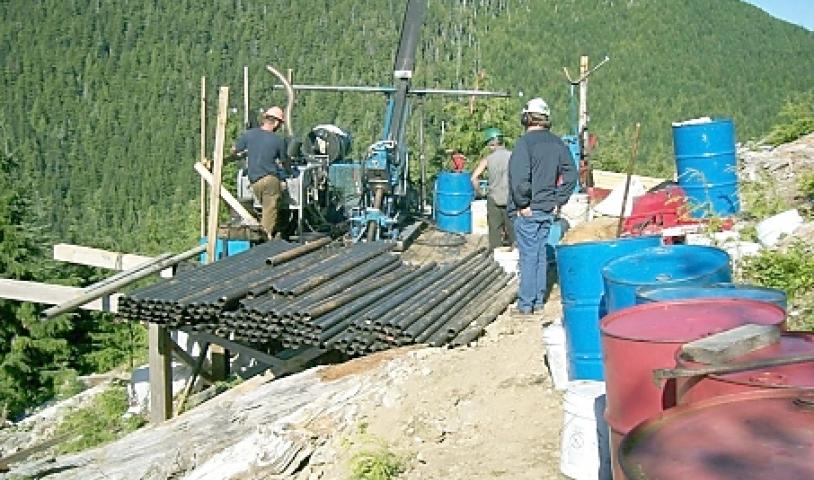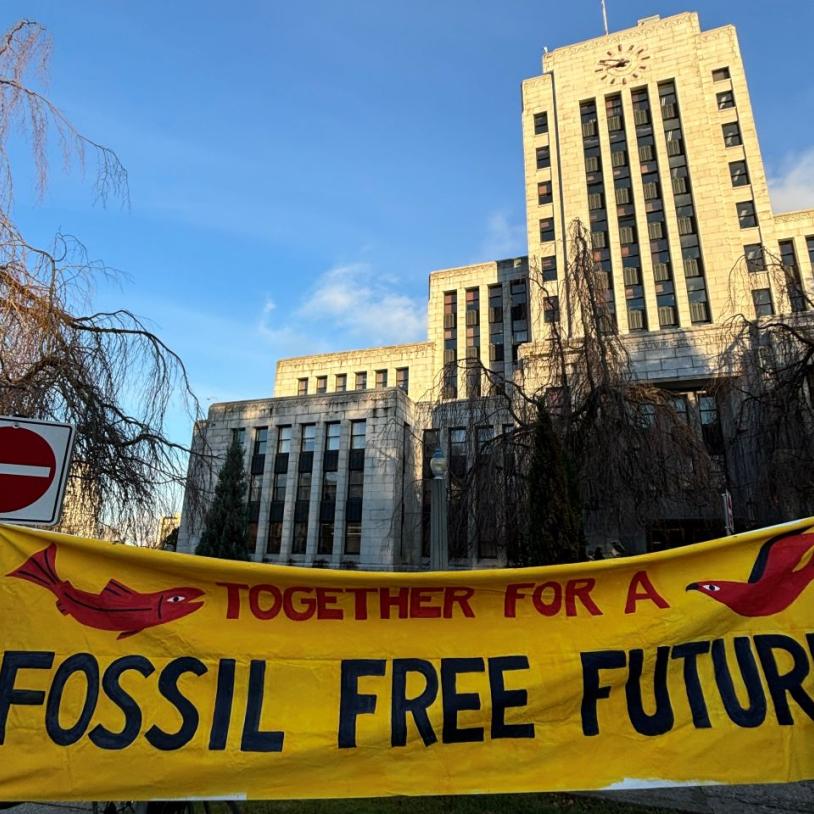Downsides of Catface mining project make a long list, analyst
Friday, May 14, 2010
Jobs and tax revenue are the up sides to a copper mine in Clayoquot Sound, but the downsides make for a much longer list, said a mining industry analyst in Tofino Tuesday evening.
Arthur Caldicott, an independent industry analyst, was asked to speak about a potential copper mine on Catface Mountain by NDP MLA Scott Fraser. Roughly 62 people attended the meeting held at the Tofino Legion.
Fraser prefaced the presentation by saying he wanted to start an open discussion. In that vein, he contacted the chief and council of the Ahousaht First Nation, in whose traditional territory the mine would be located, to inform them about the meeting.
 Catface Mountain is a potential location for copper mining on the West Coast.
Catface Mountain is a potential location for copper mining on the West Coast. "I don't know if all of you have been to Ahousaht, but you have to know the needs there are great," Fraser said. "The pressures on the elected chief and council are huge. We are living in relative affluence; right next door it is truly third world conditions... appalling unemployment statistics."
He stressed the discussions were not a criticism of the Ahousaht or their leadership.
Caldicott's presentation focused on putting the mine in context - globally, within British Columbia and within the industry. He also discussed the actual mining process and how permitting works.
The blasted rock from Catface would more than likely be concentrated at the site with the use of various chemicals, then probably shipped to China to a smelting facility.
The waste rock and tailings material produced inevitably leach toxic sulfide into the environment. This process can be slowed down by putting the material in water, said Caldicott, but it can take as long as 1,200 years before the sulfide in the rock leaches out completely.
The likely scenario on Catface for disposal of the waste would be a tailings pond, or a manufactured pond. But it's unlikely the material would be contained in the pond given the volume of rainfall in the area, he noted.
"Once they've hauled this rock out of the ground and ground it up and put it in the waste pits, it is an environmental nightmare," Caldicott said.
One of the creeks on the mountain (Irishmen Creek) is a salmon-bearing stream and would be "certainly devastated," by a mining operation, he added.
Other effects would include the visual impact of the mine on the mountain, and the noise produced from a 24/7 operation.
Caldicott stressed that Imperials Metals Corp., the proponent of the test-drilling program currently underway (and the company that owns the claims on Catface), has probably not determined many details of a potential mine at this stage of the process (they are currently still exploring the mineral deposit).
One of the considerations would have to be how to bring between 80 and 110 megawatts of necessary power to the site should the company decide to go ahead with a mine. To put this in context, Caldicott said that is equal to one ninth of the power generated by the recently announced Site C power project (dam and hydroelectric project on the Peace River). A transmission line could come from either across island, via Hwy 4 or from Gold River.
In terms of the company itself, Caldicott said Imperial currently has two operating mines, one of which, the Huckleberry mine site, will be closed in 2012. He noted the company will undoubtedly be looking at how to keep their yearly revenues at 2009 levels ($201 million in revenue, $35.5 million net income) by bringing another producing mine site online.
Catface is one of two projects Imperial has in the works at a more advanced stage of exploration, the other being the Red Cross mine in northern B.C.
Catface has a measured and indicated projection of 56,863,000 tonnes of copper, while Red Cross is much higher at 312,571,000 tonnes. However, the amount for Catface is based on only one of three potential deposit zones.
Caldicott mentioned the metal's "ubiquitous" presence in our lives, and noted that it's an attractive commodity for mining companies because of its stable pricing and ever-rising production.
"You'll forgive me for this horribly crude metaphor," he said. "Mining companies are very much like dogs after a bitch in heat. There's no thinking going on there. They are just profit-oriented and mining is their business. They don't have warm hearts for your concern about the fish or the community your children are growing up in."
He said the only way to dissuade them is to come up with a regulatory way to "get in the way," or convince government to come to your community's aid.
In terms of the process for an environmental assessment certificate and a mining permit, he said both the provincial and federal governments could have a role to play. If the application is in any way contentious or if there are certain triggers such as fisheries issues, Environment Canada will have its own environmental review process. Oftentimes, the provincial and federal processes are streamlined.
Only one mining application was turned down due to a negative environmental assessment in B.C., for Kemess North mine near Williams Lake. Companies often do pull their applications if there are too many issues, Caldicott added.
In response to an audience comment, Fraser said he felt the Clayoquot Sound Biosphere Reserve designation should not be discounted, as both the province and the country are signatories: "There's an expectation internationally that the province and the country of Canada will live up to their signature."
"There might be more clout there than we know."
Gwaawiina (Joe James) from Ahousaht said there are many people there who are, like him, opposed to the mine, despite the fact a vote in the community was in favour.
He said the numbers being thrown around were that the mine would provide 100 jobs for 50 years.
"One hundred jobs for 50 years is nothing," Gwaawiina said. "The toxic waste that's going to be left here for 1,200 years minimum?"
Resource extraction companies also tend to tap the resource and then leave the area like a "ghost town," he said.
His own family has a camp and trap lines at the base of Catface, and Gwaawiina said the mountain has spiritual significance.
"I think the reality is that we know the downside of all of this and we have power," he said. "If this community can stop McDonalds and Starbucks from coming here I think we can stop them from tearing apart a mountain."
John Caton, a director with the BC Wilderness Tourism Association and the manager of the Clayoquot Wilderness Resort said he is working with Ahousaht to make tourism an economic driver.
He agreed that alternatives must be developed: "We have to look at alternatives, we just can't say no to the mine, I mean we have to say no to the mine, but we have to put some alternatives out there for the community to survive."
He also spoke to the effect the possibility of the mine may have on the community: "It's a shame that this is being put in front of the people of Ahousaht because it's going to rip families apart over there on the proper way to go."
No one at the meeting spoke up in favour of the mine, although one audience member did make a comment that the demand for copper is "why we need to mine."
Imperial Metals has stated they will continue their exploratory drilling program in 2010. Information from the Friends of Clayoquot Sound states the company will decide at the end of the year whether or not to proceed with an application for a mine site.





